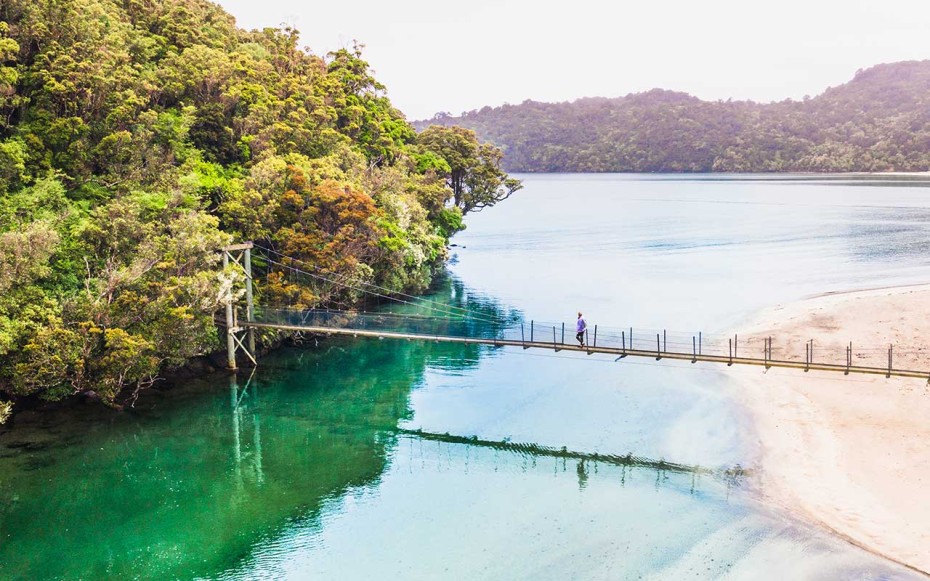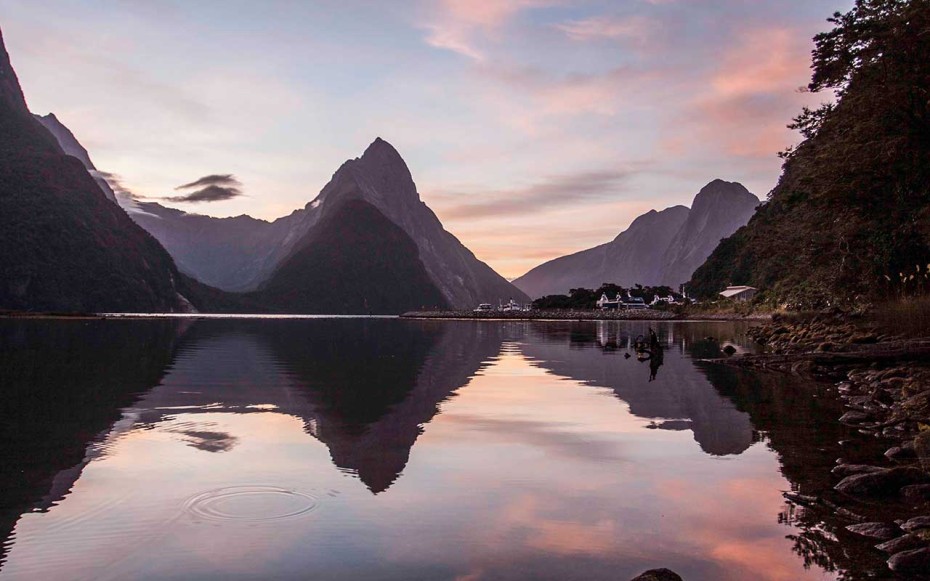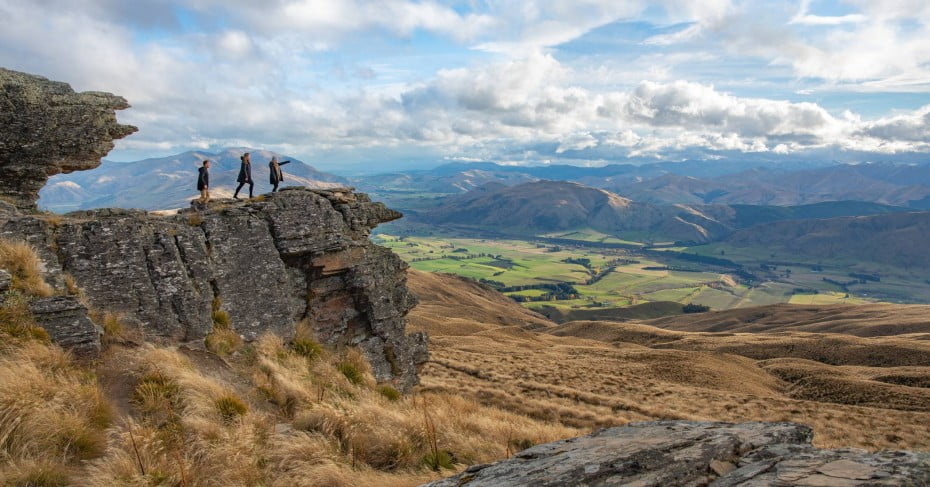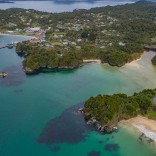Southland's great outdoors
One of the best things you can do for your Southland adventure is hire a car. It'll give you the freedom to discover points of interest in some of New Zealand's most remote and pristine places, where wildlife sightings aren't just occasional, they're part of the everyday scenery. After landing in Invercargill, travel east to explore the extraordinary Catlins, west to find Riverton, Tuatapere and Fiordland, north for cycle trails and south to catch the ferry to Stewart Island.
More kiwi than humans live on Stewart Island - around 15,000 vs 400 at last estimate. And nearly the entire island is contained within Rakiura National Park.
Touring the Catlins Coast
Waterfalls, forests and marine mammal encounters await you in the Catlins region, a stretch of wilderness that begins at Fortrose and ends just south of Balclutha. This remarkable road trip will take you to sweeping ocean beaches, towering cliffs, a historic lighthouse, amazing local wildlife and friendly local pubs. You can also choose from a range of walking tracks through ancient native forests to hidden waterfalls and tranquil lakes.
Things to do in the Catlins region include visiting Nugget Point for close encounters with marine mammals and sea birds; walking to the beautiful three-tiered Purakaunui Falls; snapping pictures of sea lions in Surat Bay; popping into Porpoise Bay to spot rare Hector's dolphins; and getting curious in Curio Bay, which has a 180-million-year-old petrified forest.
Bird watching, hiking and fishing on Stewart Island
Getting to Stewart Island starts at the town of Bluff, where you'll catch a ferry to the wharf at Halfmoon Bay. Then you're on Stewart Island time, and it seems the rest of the world just doesn't matter. If you need a digital detox, this is the place to do it.

In Oban, the island's only town, there's one pub, one petrol station and one grocery store (with one ATM). More kiwi live on this island than humans - around 400 vs 15,000 at last estimate. And nearly the entire island is contained within Rakiura National Park, so one of the big things to do on Stewart Island is commune with nature.
The easiest walks to access are the Fuchsia and Raroa walks. You can also hike to Ackers Point at dusk to watch the mutton birds returning to their burrows. The ultimate expedition on Stewart Island is the Rakiura Track, one of New Zealand's 'Great Walks'. A 36km circuit, it follows the open coast, climbs over a high forested ridge and traverses the sheltered shores of Paterson Inlet. For most people, the track takes three days to complete.
Stewart Island's Māori name is Rakiura, which means 'glowing skies' - a salute to the Aurora Australis, also known as the Southern Lights, a natural special effect that can sometimes be seen in winter. In 2019 the island was declared an International Dark Sky Sanctuary and stargazing here is epic.
Delving into Fiordland National Park
Te Anau and Manapouri are the places to begin your adventures in Fiordland National Park and the spectacular fiords of Milford and Doubtful Sounds. Just 20 minutes apart, these delightful lakeside towns offer accommodation options to suit all tastes and budgets. Things to do in Te Anau include lake cruises, horse treks and jet boat rides, while Manapouri is the departure point for tours to Doubtful Sound.
From Te Anau, the drive to Milford Sound takes around two hours. This fiord is a must-see natural wonder. Carved by ancient glaciers, the near vertical walls rise hundreds of metres above the deep, clear waters. Roaring rivers, from the rainforests high above, suddenly find themselves in thin air and plummet as spectacular waterfalls to the sea below. They create a continuous mist for native trees, ferns and mosses that cling precariously to the cliffs. Fur seals can often be seen basking on the rock shelf at sea level. There are many things to do in Milford Sound, such as boat trips, kayaking and sightseeing flights.
Doubtful Sound is the deepest of all the fiords and is sometimes called 'the sound of silence'. This remote area of the Fiordland National Park is virtually untouched by mankind. Ancient rainforests cling to the glacier-carved walls, interrupted only by towering waterfalls and vertical rock faces. If you take a tour to Doubtful Sound, there's a good chance you'll see bottlenose dolphins, fur seals and penguins.
Three of New Zealand's Great Walks are in Fiordland:
- The 53km Milford Track, one of the world's most famous hikes
- The rugged three-day 33km Routeburn Track, which rewards hikers with beautiful alpine meadows and tarns, soaring peaks, waterfalls, lakes and huge valleys. It reaches a soul-lifting 1,255 metres above sea level and is widely regarded and New Zealand's ultimate alpine adventure
- The four-day 60km Kepler Track, a circular wilderness trek that includes the Luxmore Caves and Iris Burn Falls. The landscapes range from tussock covered alpine ridges with breath-taking vistas and views of Lake Te Anau, to native beech forest in tranquil valleys with lakes

Country life in Gore and Mandeville
The rural town of Gore, famous for its country music and brown trout fishing, is growing into a hub for history and culture. The Hokonui Moonshine Museum offers fascinating insights into the illegal whisky distilling era, while the gallery displays art attractions from around the world, including the John Money collection and works from New Zealand's premier artist, Ralph Hotere.
At Mandeville, near Gore, the Croydon Aircraft Company specialises in restoring and repairing vintage planes. You can tour the restoration workshop, relax in the café, or take a thrilling flight in an open cockpit vintage aircraft, complete with leather jacket and goggles.
Exploring Riverton, Gemstone Beach, Bluecliffs Beach and Tuatapere
One of the oldest towns in New Zealand, Riverton offers safe swimming beaches, peaceful walks, relaxing cafes and fascinating local history. Don't miss Te Hikoi - A Southern Journey, an innovative museum attraction highlighting the unique cultural heritage of New Zealand's southern coast. Further on from Riverton, Colac Bay and Porridge provide experienced surfers with some of the best waves in the south.
On the way to Tuatapere is wild Gemstone Beach, where you can hunt for beautiful coloured rocks that have been polished by the ocean. This beach is part of Te Waewae Bay, a designated marine mammal sanctuary. Dolphin and whale sightings are frequent here. Bluecliffs Beach, on the other side of the Waiau River, is a long stretch of pristine coastline that's great for walking at low tide.
The river town of Tuatapere is where the Hump Ridge Track begins. Created and built by the locals, the track covers a huge variety of landscapes, from sea to sub-alpine tundra, and includes the largest wooden viaduct in the world. Tuatapere is also known for its delicious sausages and considers itself to be 'the sausage capital of New Zealand'.

Cycling and mountain biking in Southland
If you like riding through inspiring landscapes, you'll love the fabulous cycle trails and mountain bike tracks in northern Southland. Top of the list is the 180km, three-to-five-day Around the Mountains Cycle Trail. Suitable for all levels of riding experience, this trail includes a disused railway route, a purpose built cycle trail and back country roads. It's a peaceful journey through ever-changing landscapes with tussock lands, picturesque valleys, lakes, rivers and high country farms. Along the way, you'll visit historic rural towns with cafes and galleries to explore.
For something more challenging and fast-paced, it's hard to beat the spectacular Welcome Rock Trails. Set on a private farm, this purpose-built mountain biking and hiking trail provides a 27km cross-country journey with beautiful long-range views. You can book to visit for the day, stay overnight in one of four back country huts or take a guided trip to learn more about the fascinating history of this area.
Cycle racing enthusiasts should check out the SBS Tour of Southland, a teams event held late October or early November each year. It's New Zealand's leading multi-stage cycling tour starting with a Team Time Trial in Invercargill's Queens Park before taking on huge road distances throughout Southland, the Lakes District and Fiordland.

Fly fishing
Southland rivers are prized for their large wild brown and rainbow trout, as well as the spectacular scenery. In many spots, the waters are so clear you can easily sight your target catch. The Mataura River, with its ever-reliable caddis and mayfly hatches, is fed by numerous tributaries as it flows south to Gore, a town known as 'the brown trout capital of the world'. To the west, around Milford Sound and Doubtless Sound in the Fiordland National Park, the high rainfall provides a huge selection of exciting rivers to fish. The Southland fishing season for the majority of waters is from October to April. Throughout the region, experienced local guides will help you find the best spots for your favourite fishing experiences, sort out licences and equipment, and give you a taste of the famous Southland hospitality.
